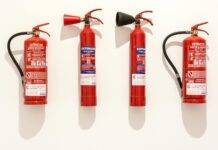
HSE Manager: Safety Quiz for HSE Manager with Answers (MCQs Test)
Introduction to HSE Manager Role
Health, Safety, and Environment (HSE) managers play a pivotal role in ensuring workplace safety and compliance with regulations. They oversee various aspects of safety protocols, risk assessments, and emergency preparedness to minimize workplace accidents and hazards.
Importance of Safety in the Workplace
Safety in the workplace is paramount for the well-being of employees and the success of businesses. It fosters a healthy work environment, boosts employee morale, and reduces the risk of injuries and accidents.
Understanding Safety Quiz for HSE Managers
Safety quizzes for HSE managers are designed to assess their knowledge and understanding of safety protocols, regulations, and best practices. These quizzes typically consist of multiple-choice questions (MCQs) covering a wide range of topics related to health, safety, and environmental management.
Benefits of Safety Quiz for HSE Managers
- Knowledge Evaluation: Safety quizzes help evaluate the knowledge and competency of HSE managers in various safety-related areas.
- Identifying Knowledge Gaps: They assist in identifying any gaps in knowledge or understanding, enabling HSE managers to address them effectively.
- Continuous Learning: Regular participation in safety quizzes promotes continuous learning and professional development among HSE managers.
- Enhanced Safety Culture: By reinforcing safety principles and best practices, these quizzes contribute to building a robust safety culture within the organization.
Key Components of Safety Quiz
Safety quizzes for HSE managers typically include the following components:
Multiple Choice Questions (MCQs)
MCQs are the primary format used in safety quizzes, offering multiple options for each question, with only one correct answer.
Test Format
The quiz may be administered online or in-person, depending on the preference of the organization. It can be timed or untimed, with a set number of questions.
Topics Covered
The topics covered in the safety quiz may include:
- Occupational Health and Safety (OHS) regulations
- Hazard identification and risk assessment
- Emergency response and evacuation procedures
- Safety management systems
- Workplace ergonomics and hygiene
- Environmental management practices
How to Prepare for the Safety Quiz
To prepare for the safety quiz, HSE managers should:
- Review relevant regulations and industry standards
- Stay updated on emerging trends and developments in the field
- Take practice quizzes to assess their knowledge and identify areas for improvement
Sample Questions for HSE Managers
Which of the following is NOT a recognized type of workplace hazard? A) Chemical hazard
B) Ergonomic hazard
C) Physical hazard
D) Psychosocial hazard
Answer: D) Psychosocial hazard
What is the primary purpose of a Job Safety Analysis (JSA)? A) To analyze financial performance
B) To identify potential hazards associated with specific job tasks
C) To evaluate employee productivity
D) To design marketing strategies
Answer: B) To identify potential hazards associated with specific job tasks
Which of the following is an example of an administrative control measure for hazard control? A) Installing machine guards
B) Providing personal protective equipment (PPE)
C) Implementing safety training programs
D) Conducting air quality monitoring
Answer: C) Implementing safety training programs
What is the purpose of a Behavior-Based Safety (BBS) program? A) To monitor employee attendance
B) To assess financial forecasts
C) To encourage safe behaviors and reduce unsafe actions
D) To track inventory levels
Answer: C) To encourage safe behaviors and reduce unsafe actions
Which of the following is an example of a leading indicator for safety performance? A) Number of accidents reported
B) Lost time injury rate
C) Near miss reporting frequency
D) Workers’ compensation claims
Answer: C) Near miss reporting frequency
What is the primary purpose of conducting a root cause analysis after an incident? A) To assign blame to individuals
B) To identify the underlying causes of the incident and prevent recurrence
C) To calculate financial losses
D) To determine employee satisfaction levels
Answer: B) To identify the underlying causes of the incident and prevent recurrence
What is the primary function of a Safety Management System (SMS)? A) To track inventory levels
B) To manage employee payroll
C) To systematically manage safety risks
D) To evaluate marketing strategies
Answer: C) To systematically manage safety risks
Which of the following is an example of a lagging indicator for safety performance? A) Near miss reporting frequency
B) Safety inspection results
C) Total recordable injury rate
D) Employee satisfaction survey results
Answer: C) Total recordable injury rate
What is the role of a Safety Data Analyst in an organization's safety program? A) To lead emergency response efforts
B) To analyze safety data and trends to identify areas for improvement
C) To conduct workplace inspections
D) To design product packaging
Answer: B) To analyze safety data and trends to identify areas for improvement
Which of the following is NOT typically included in a safety audit checklist? A) Emergency exit signage
B) Employee attendance records
C) Fire extinguisher inspection dates
D) Machine guarding effectiveness
Answer: B) Employee attendance records
HSE Supervisor: Safety Quiz for HSE Supervisor with Answers (MCQs Test)
HSE Engineer: Safety Quiz for HSE Engineer with Answers (MCQs Test)
HSE Officer: Safety Quiz for HSE Officer with Answers (MCQs Test)
Safety Manager: Safety Quiz for Safety Manager with Answers (MCQs Test)
Safety Supervisor: Safety Quiz for Safety Supervisor with Answers (MCQs Test)
Importance of Continuous Learning for HSE Managers
Continuous learning is essential for HSE managers to stay abreast of evolving safety regulations, technologies, and best practices. By investing in professional development and training opportunities, HSE managers can enhance their skills and contribute to a safer work environment.
Conclusion
Safety quizzes for HSE managers serve as valuable tools for assessing knowledge, identifying areas for improvement, and promoting continuous learning. By prioritizing safety and investing in the professional development of HSE managers, organizations can create safer and healthier workplaces for their employees.
FAQs
- What are the primary responsibilities of an HSE Manager?
- HSE managers are responsible for developing, implementing, and monitoring health, safety, and environmental policies and procedures in the workplace.
- How often should HSE Managers take safety quizzes?
- The frequency of safety quizzes may vary depending on organizational policies and industry regulations. However, regular assessments are recommended to ensure ongoing competency and knowledge retention.
- Can safety quizzes help improve workplace safety culture?
- Yes, safety quizzes play a vital role in reinforcing safety principles and fostering a culture of safety awareness among employees and management.
- Are safety quizzes mandatory for HSE Managers?
- While safety quizzes may not be mandatory in all organizations, they are highly recommended as part of a comprehensive approach to safety training and professional development.
- Where can HSE Managers find resources for safety quizzes?
- HSE managers can find resources for safety quizzes from reputable industry associations, online training providers, and regulatory agencies specializing in occupational health and safety.

























phenomenal and comprehensive knowledge about safety line